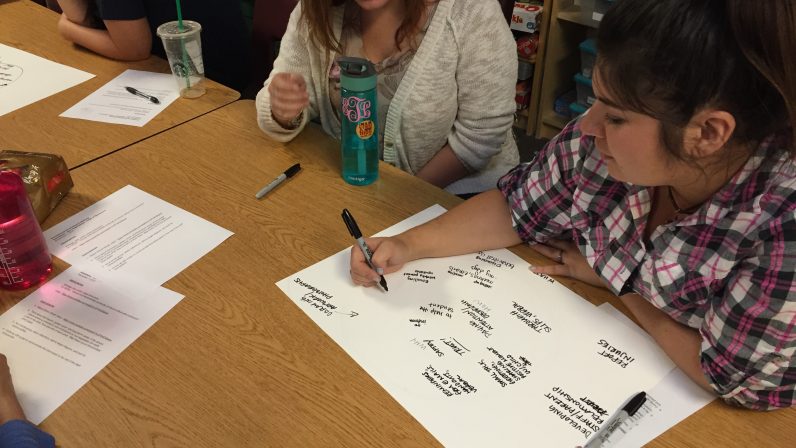Star Wars has arrived at the Seed. Actually, Awakening Seed was founded in 1977, the same year Star Wars premiered, so we’ve had a long parallel history. Over the years we’ve seen a steady influx of stormtroopers, Power Rangers, Ninja Turtles, and other supernatural warriors acting out their missions in life. It’s a trend most prevalent with four-year-old boys, but not always. This year’s hype with the new Star Wars movie is particularly strong. As early as late September, we had questions related to Star Wars paraphernalia (specifically if the light saber is a weapon or not). The single consistent response to all of these warriors is one of our oldest and most steadfast rules, no weapons, real or pretend.
On Monday, Star Wars came up at the all-school meeting. Are kids allowed to play Star Wars? What are the guidelines? What it came down to was one question: What’s the rule? NO WEAPONS. Groups most passionately involved in the topic took it back to their classrooms with the task of discussing how to play Star Wars, or any game involving warriors, without weapons. A few ideas they came up with were building/maintaining a space ship, searching for someone, constructing robots, and rescuing someone from danger. I thought about this situation all day, particularly as we planned our professional development session for the assistants that afternoon.
Our original intention was to do work around one of our strategic plan action steps, “ensure and demonstrate continuity of the school culture and curriculum,” with an emphasis on communications. Star Wars fit right in. We started with an excerpt from a TED talk by Simon Sinek (https://www.youtube.com/watch?v=IPYeCltXpxw). He explained the “golden circle” of an organization that contains the what, how, and why of the group. His recommendation was to always remember the why. As we examined what we do and how, the why naturally surfaced. Basically, we do what we do because we are dedicated to providing our students a safe, peaceful learning environment that serves the well-being of each individual. If a practice or behavior doesn’t meet this criteria, we make every effort keep it out of the school environment. Exclusion is one example.
Years ago we read Vivian Paley’s You Can’t Say You Can’t Play (http://www.hup.harvard.edu/catalog.php?isbn=9780674965904), a brilliant book about advocating for children who are excluded by their peers in schools. Vivian’s premise is that if as teachers we don’t stand up for the kids who are being left out, who will? I believe our no weapons policy falls in that category. Just because play involving pretend weapons is a common practice among young children doesn’t mean it’s okay to allow it in an environment dedicated to peace, safety, and well-being. We are making a choice to give children the message that violence causes suffering, that nobody wins when situations become violent. We give children tools, such as using their brave voices, to resolve problems peacefully. Next week when the new Star Wars movie comes out, we know many of our students will stand in line to see it. I plan to see it myself. And we will continue to use it through dialogue and reflection to nurture this current generation of peaceful warriors. We do it because we believe it’s the healthiest path for our students and our planet.


Right on target Mary.
Bill